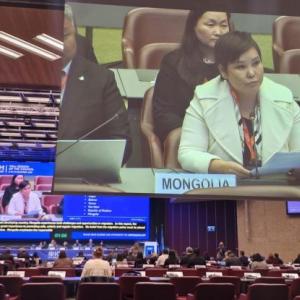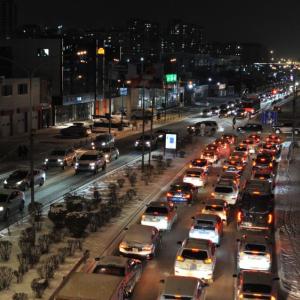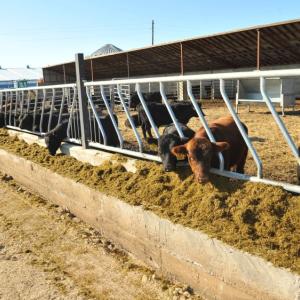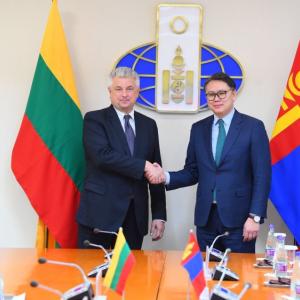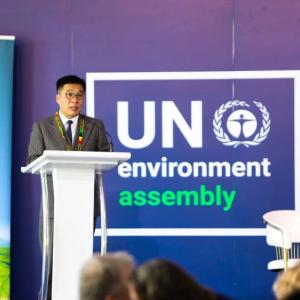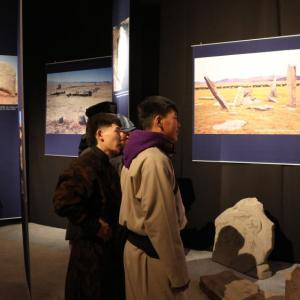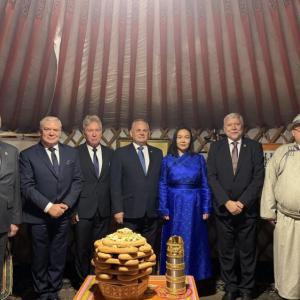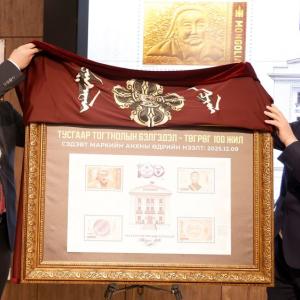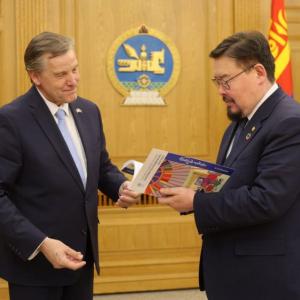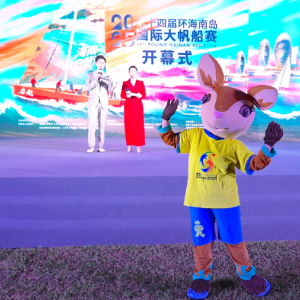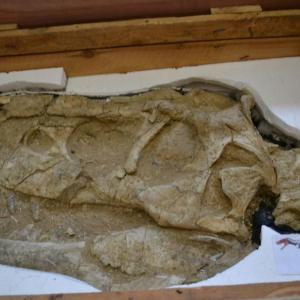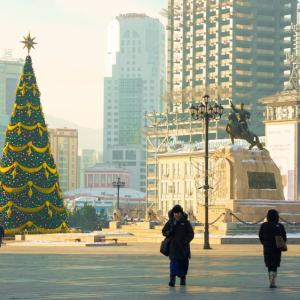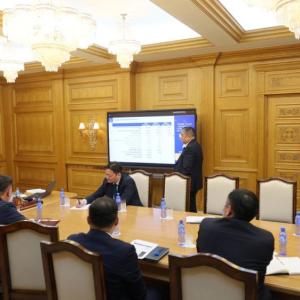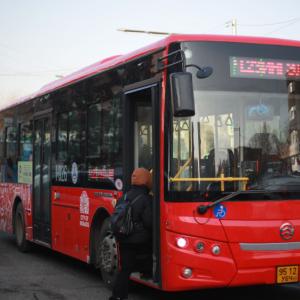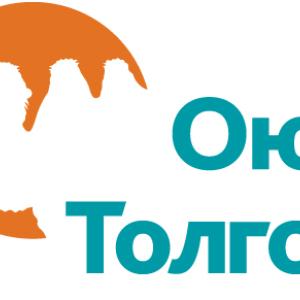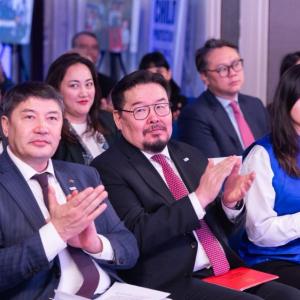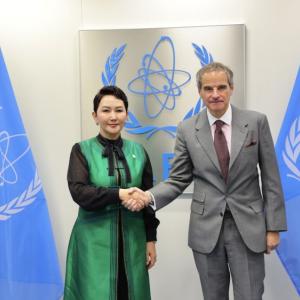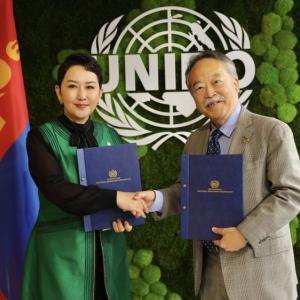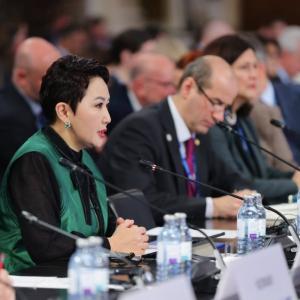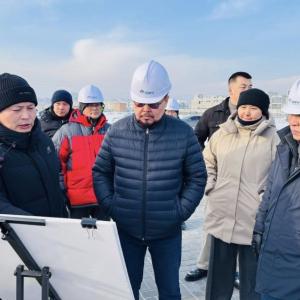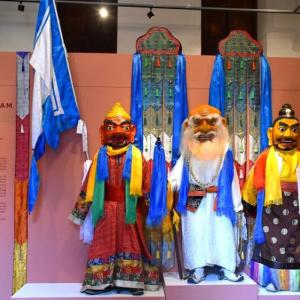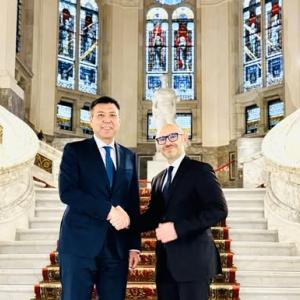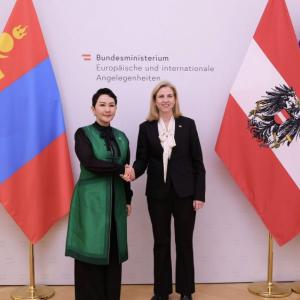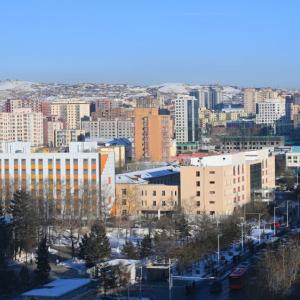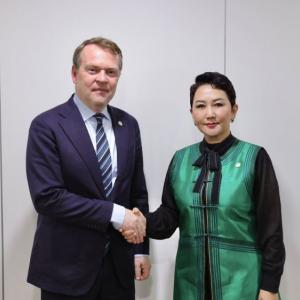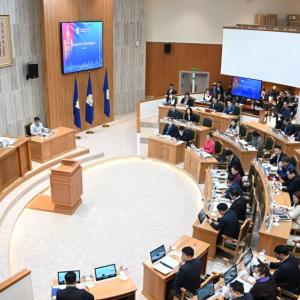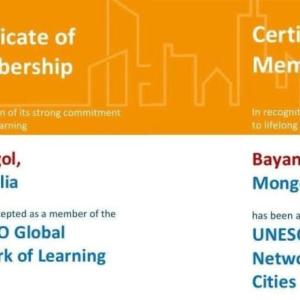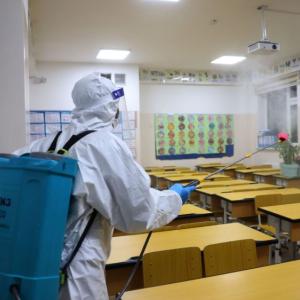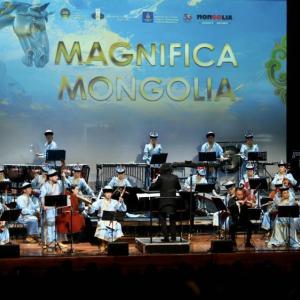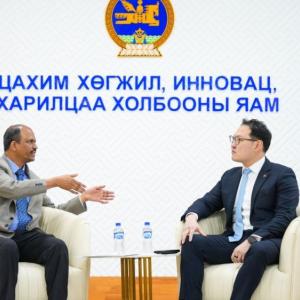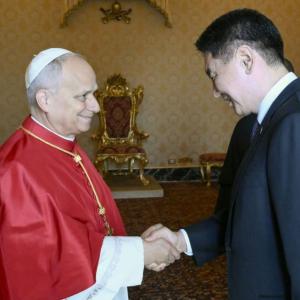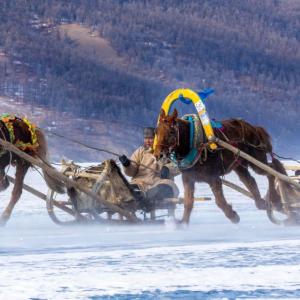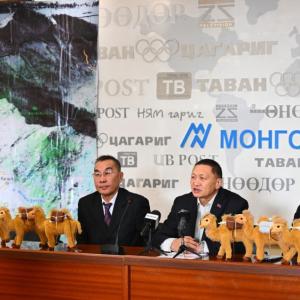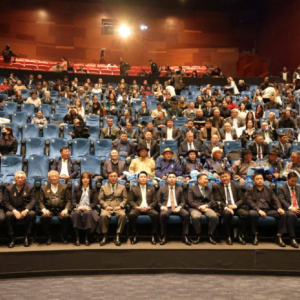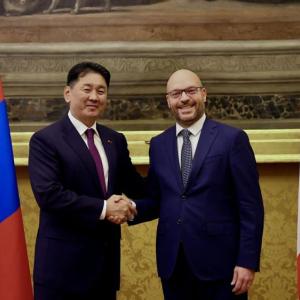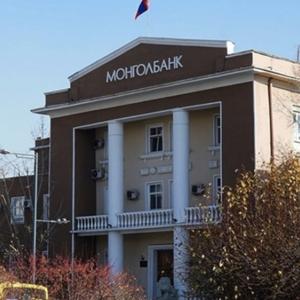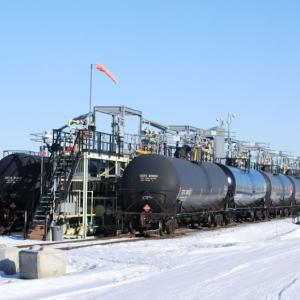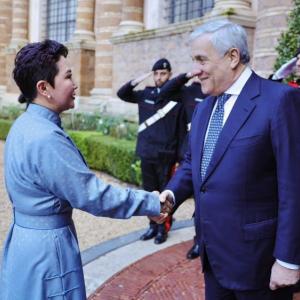Switzerland Stands Firmly with Mongolia to Strengthen Its Democracy and Pursuit of Peace
The Mongol Messenger
Ulaanbaatar, July 19, 2024 /MONTSAME/. MONTSAME National News Agency of Mongolia interviewed Stefanie Burri, Head of the Swiss Cooperation Agency and Consular Agency (SDC) in Mongolia.
Thank
you for taking the time to give an interview with us. This year marks the 60th
anniversary of the establishment of diplomatic relations between Mongolia and
the Swiss Confederation. Can you briefly tell us about the developments and
strides made in the relations of the two countries?
Thank you very much for your time and
your interest. We are always happy to exchange ideas, views, and approaches.
The relations between Mongolia and
Switzerland started in 1964 when the two countries established diplomatic
relations. During this time, the two countries had normal exchanges and
interactions, with a textile factory coming to Mongolia for business purposes
only. However, real cooperation started with the opening of the Swiss Agency
for Development and Cooperation (SDC) Office in Mongolia in 2004.
In 2001, Mongolia had a severe dzud, a
natural disaster, even worse than now, and the Mongolian Government asked
Switzerland for assistance. That's why we came here and supported Mongolian
herders. We provided monetary assistance for them to buy new livestock and
fodder. This was a difficult time, and without the aid, many herders would have
had to migrate to Ulaanbaatar and leave their herder lifestyles.
After this support, we decided to open
an Office in Mongolia in 2004, and slowly, the humanitarian aid shifted to more
developed bilateral relations. I think we have had excellent results because we
collaborated with partners at all levels, from citizens, and NGOs to the
Government. We have cooperated on the micro level with the civil societies, and
NGOs, in meso with the local governments, and in the macro with the national
government.
This is why the seeds we planted in
2004, with projects in education, governance, democracy, air pollution,
agriculture, food security, and so on, grew into strong trees. And because we
worked with all levels, these trees bore good fruits that we can harvest today
and in the future. I’m sure that this venture will continue beyond the SDC
office here.
Among
the many important and fruitful projects and programs of the SDC in Mongolia,
which was most effective or had the most impact?
We've achieved significant success
through various projects, starting with our collaboration with herders, which
began in response to the 2001 dzud crisis. Recognizing the recurring nature of
these disasters, compounded by issues like overgrazing and poor pasture
management, we partnered with the Mongolian Ministries to establish a livestock
registration database. This initiative, now managed by the government, ensures
traceability and facilitates legitimate meat sales and animal vaccinations,
leading to healthier livestock and higher-quality wool and leather production.
In conjunction, we supported the herder’s
association to empower herders in improving product quality, securing better
market prices, and promoting sustainable pasture practices. Overgrazing remains
a significant challenge, addressed in part by diversifying livestock beyond
cashmere goats to include camels and yaks, whose wool and eco-friendly grazing
habits offer alternative incomes.
The technical assistance in enhancing
yak wool quality and promoting yak milk and leather has transformed these
products into high-quality goods. For instance, Mongolian yak leather, once
hindered by veterinary issues, now produces premium items like handmade
footballs with traceable origins and responsible production practices certified
via QR codes.
The Responsible Nomads brand, now under
Mongolian Government ownership, ensures products from goats, camels, and yaks
originate from responsibly managed pastures, deterring overgrazing. QR code
labels provide consumers with transparency, reinforcing Mongolian authenticity
and responsible production standards, thereby commanding higher market value.
Collaborations with entities like the Hu
Band and Hunnu Brand leverage traceable yak leather to create merchandise with
assured Mongolian origin, fetching premium prices due to its provenance and
sustainability.
Lastly, marking the 60th anniversary of
diplomatic relations, a Swiss cheese expert collaborated with APU company to
create Friendship Cheese from Mongolian cow milk, showcasing our commitment to
cultural exchange and quality products.
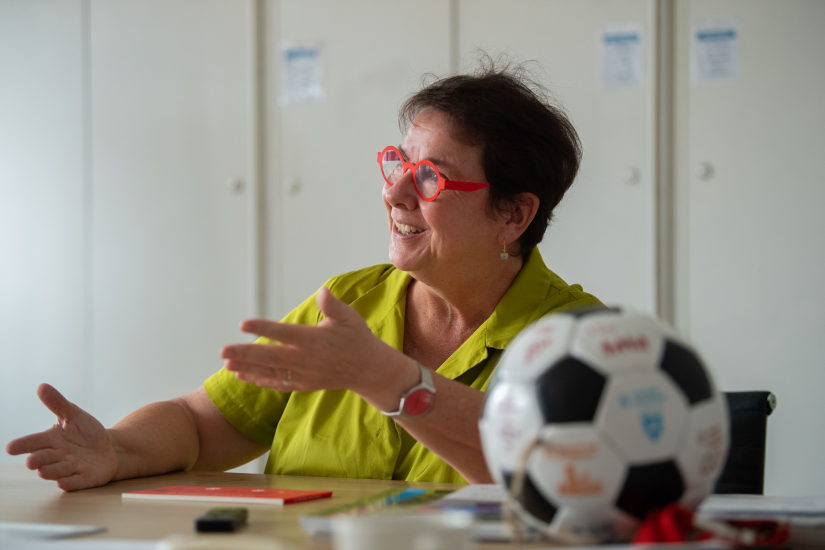
It
is interesting to see what products can be made using Swiss technology and
Mongolian materials. What prospects of cooperation does the SDC have in
Mongolia?
Our success in achieving project goals
is rooted in our collaboration with the Government of Mongolia at the macro
level. Projects like the “Strengthening Representative Bodies in Mongolia”
initiative and partnerships with the State Great Khural (Parliament) for
example have strengthened Parliamentary oversight to government oversight.
Looking ahead, the SDC's future in Mongolia is focused on supporting democratic
processes and advancing good governance practices. We are committed to
continuing our assistance to the Mongolian Government, including our ongoing
support for the parliamentary service project, which has proven successful and
led to a renewed contract with the State Great Khural. Despite closing our SDC
office, traditionally marking the end of project engagement, the positive
outcomes in Mongolia have garnered continued support from the Swiss Parliament.
This commitment was reaffirmed with a new agreement signed in May 2024,
highlighting the enduring partnership between the Swiss Parliament and the
Mongolian Parliament.
Recognizing the crucial role of the
Constitutional Court of Mongolia in safeguarding democracy and human rights, we
have initiated a new project to enhance its capacity. This court ensures law
enforcement and safeguards democratic principles, underscoring the importance
of our support. This initiative formalized with an agreement in May 2024,
demonstrates our ongoing dedication to strengthening Mongolia's democratic
institutions.

Does
this mean the bilateral relations of the two countries would move to another
level?
I’m convinced that every country experiences
humanitarian disasters at times. Just last week, Switzerland faced severe
floods that destroyed many villages and caused significant property damage.
Those affected need solidarity, as well as aid in the form of goods and money
to rebuild their homes and communities. Thus, every country occasionally faces
such catastrophes and may either manage them internally or call for external
support. Switzerland stands ready to assist if the Mongolian government
requests help.
I believe that any bilateral cooperation
between two countries inherently contains a hierarchical dimension, with donor
countries often taking a leading role. In the past, Switzerland has engaged in
such dynamics by providing funding and support. However, we aspire to elevate
our relationship to a new level. We envision a future where Switzerland and
Mongolia engage in a true partnership of equals, marked by mutual respect and
equal financial contributions.
This partnership should be mutually
beneficial, reflecting a one-to-one collaboration where both countries
contribute and gain equally. We are also convinced that Mongolia has much to
offer to the world, and there is a great deal that other countries can learn
from Mongolia. Allow me to share an example:
Last year, a delegation of government
representatives from the Kingdom of Cambodia, Lao People's Democratic Republic,
and Tajikistan visited Mongolia to study the experience of decentralization
reform in the country. The delegation was inspired by seeing the results
of the SDC’s decentralization support program in Mongolia, namely the improved
accessibility of public services. Just one concrete example of the program
results is that people can now get their ID cards from khoroo (sub-district)
service centers instead of going to their district’s Public Service Centre.
Democracy in Mongolia is a model, a
“star in the sky.” Countries come here to see sustainable achievements of projects
like the "One Stop Service Center," and Mongolia can proudly showcase
the results, sharing their experiences and lessons learned. This often sparks
curiosity and interest from other nations. For instance, visitors from Laos,
Cambodia, and Tajikistan returned to their home countries inspired by
Mongolia's example. They are eager to revisit, and we believe that many other
countries can also learn valuable lessons here. This truly exemplifies a
win-win situation.
Therefore, it is all about new, evolving
modalities. Let me share a humanitarian example: our collaboration with the
Bundan NGO, led by Dr. B. Boldsaikhan, through the “Heart Never Forget”
Project. We've supported this initiative twice and witnessed their remarkable
work. They expanded their efforts to Kyrgyzstan and received requests from
North Korea and Afghanistan. Together, we developed a regional project, now
including children in need from these countries alongside those in Mongolia.
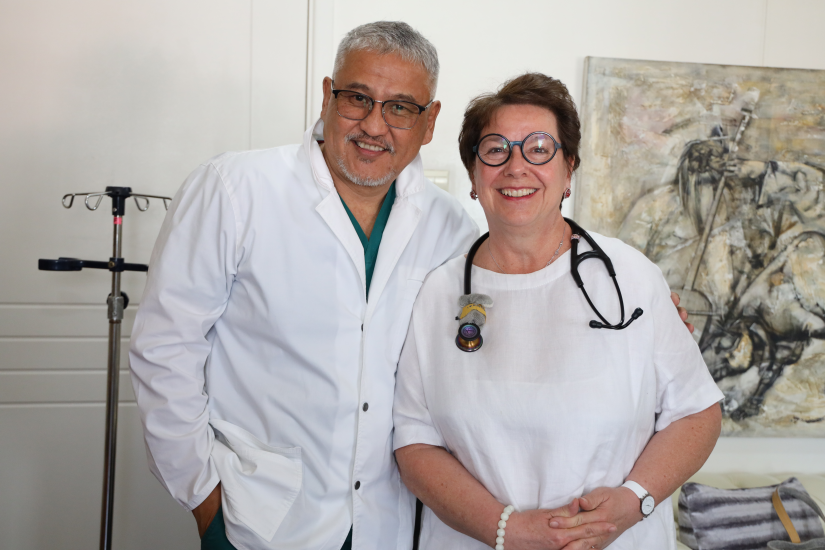
Additionally, doctors and surgical staff
from these countries come to Mongolia for training and capacity building. They
return home to support their health systems and save children. This project
goes beyond humanitarian aid; it's also an initiative for peace. When countries
work together, it fosters dialogue and builds friendships between people and
organizations, ultimately supporting peace.
Peace is key for both Mongolia and
Switzerland. Our countries share strong values of neutrality, gender equality,
respect for human rights, and peace. These shared values make our nations quite
similar, and we aim to further strengthen them in the future. Our collaboration
includes not only concrete projects but also joint interests. The recent
Ulaanbaatar Dialogue, for instance, was a mutual effort to build and strengthen
peace through dialogue.
Switzerland
is one of the major trading partners of Mongolia. The trade turnover between
the two countries was USD 30 thousand 20 years ago, which increased 50 times to
USD 1.7 billion today. However, most of the exports from Mongolia to
Switzerland are minerals. For example, 97 percent of gold exports from Mongolia
go to Switzerland. Is there a way for Switzerland to diversify the variety of
goods imported from Mongolia?
Yes, you're right. We are the second
most important export country for Mongolia. Nearly 100% of Mongolian gold is
exported to Switzerland.
Our collaboration with the Central Bank
of Mongolia began in 2005 with a project to support artisanal miners. These
miners often used child labor and environmentally harmful methods and lacked legal
and social benefits. We introduced eco-friendly methodologies, discouraged
child labor, and helped establish a mining association. Today, with support
from SDC and the Mongolian Government, artisanal mining is legally recognized,
providing miners with social benefits and eco-friendly techniques, enabling
them to access the fair-trade gold market.
We also worked with the Central Bank of
Mongolia to set up a decentralized gold assaying and purchasing center, known
as One Stop Service Center, like one in Darkhan City, where miners can smelt,
test, and sell their gold. This system simplifies the process, ensures
transparency, and reduces risks for miners. It's a win-win, legalizing gold
sales for miners and cutting off illegal trade for the Central Bank.
Additionally, the Central Bank issued
silver banknotes commemorating the 60th anniversary of diplomatic relations
between Mongolia and Switzerland, designed by us and printed on real silver. We
are now working to link the Central Bank of Mongolia with the Bank of
Switzerland and collaborating with the Ministry of Finance on fair-trade gold.

For the 60th anniversary, a
commemorative postage stamp was also issued, featuring the national costumes,
musical instruments, nature, and flowers of both countries. We revived a
traditional Mongolian flute with the help of the HU Band and conservatory, leading
to its inclusion in the UNESCO Heritage List last year.
Connecting these achievements
demonstrates sustainable success; isolated accomplishments often lack
sustainability.
You
have introduced many products made with yak wool and leather. Can Switzerland
increase the imports of such products other than gold?
Yak wool products are becoming popular
in Switzerland, and camel wool products are also entering the international
market. Mongolia needs to innovate and create unique products for export due to
the higher cost of Mongolian goods compared to Chinese ones. Improved
manufacturing practices, increased salaries, and fair-trade initiatives mean
that Mongolian products cannot compete with cheaper offerings from countries
like Myanmar or Bangladesh.
To succeed, Mongolian products must be
traceable and responsible. Without traceability, other countries will copy and
undercut prices. Developing creative, high-value niche products is essential.
Domestically, there is much potential
for improvement. For example, Mongolia could produce its own cheese instead of
importing from France and Switzerland. The success of the Potato Project,
introduced in 2010, made Mongolia self-sufficient in potato production. This
was crucial during the COVID-19 pandemic when borders were closed. Similarly,
efforts to improve vegetable production and seed quality have adapted to
Mongolia’s climate but still only meet 70% of domestic demand.

Mongolia should focus on covering its
domestic market needs first, such as producing enough cheese locally. Meeting
international standards and addressing supply and transportation chains are
also crucial. Ensuring quality and quantity will help Mongolia form a strong
customer base in the international market.
What
challenges have you faced during your work in Mongolia?
The winter weather can be cold, and
dealing with air pollution has its challenges. However, Mongolia enjoys
beautiful sunshine every day, even in winter.
I'm fortunate to have a wonderful team
supporting me, and I've found excellent partners—from herders to NGOs and the
Government—at every level. Our cooperation has been outstanding, pushing
boundaries and thinking creatively together. Instead of focusing on what's
lacking, we strive to utilize existing resources optimally. This approach makes
life enjoyable and fulfilling.
Over the past four years, I've traveled
extensively across Mongolia, discovering its breathtaking landscapes. I find
inspiration and new ideas outside the office, engaging with people across
different aimags. Each region has its own beauty; I particularly cherish
memories of the Altai Mountains and I loved it when we
went to see the reindeer. Recently, I enjoyed a camel day trip, and
wherever I go, Mongolia's abundant sunshine fills me with joy and wonder.

Mongolia
preserves nomadic culture. Compared to Switzerland, what do you find most
interesting about nomadic culture?
Mongolians are incredibly peaceful,
friendly, and welcoming people. Wherever I travel, I am greeted warmly and
graciously. It's truly beautiful, and I am always deeply moved by their
openness.
I have also come to appreciate the
unique Mongolian concept of time and space. Learning to say, “Okay, let’s see
tomorrow,” has taught me to be less stressed and more patient. I hope to carry
this valuable perspective back home with me.
In Mongolia, I have also learned about
their peaceful approach to problem-solving. Discussions and disagreements are
typically resolved in a calm manner, which I find admirable. This openness and
relaxed attitude towards life resonate with me deeply. It feels like embracing
the flow of life itself—a continuous and evolving process.
The Silver Tree from Kharakhorum City,
now represented in the Chinggis Khaan National Museum, symbolizes this enduring
spirit of life. It represents strength and growth, reminding me that life is an
ongoing journey of growth and renewal.
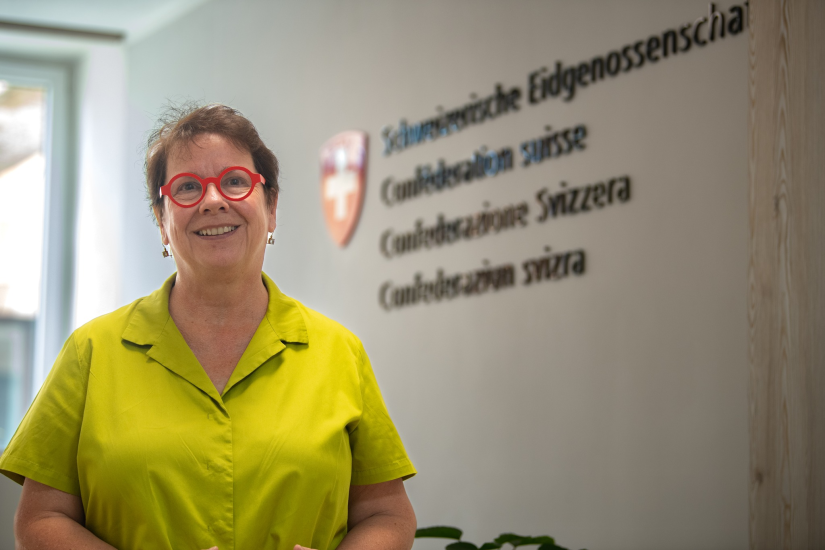
We
can see many similarities between Mongolia and Switzerland, such as music,
wrestling, and seeking peace. What other similarities do we have?
Mongolia and Switzerland share similar
cultural elements, such as cheese-making traditions using goat and cow milk. In
Mongolia, wrestlers known as Bukh competes on grass, while in Switzerland,
Schwinger wrestlers compete on sawdust. Wrestling is deeply rooted and popular
in both countries, with Switzerland even crowning an annual champion known as
the "King."
Both Mongolia and Switzerland are
landlocked countries surrounded by powerful neighbors. Mongolia is influenced
by Russia and China, while Switzerland shares borders with Germany, France,
Italy, and Austria. Both nations must navigate their relationships carefully;
decisions made by neighboring countries can significantly impact them. This
necessitates constant negotiation and balance in transport infrastructure and
foreign policy areas.
This shared experience fosters strong
dialogue skills in both countries, essential for maintaining their democratic
systems and neutrality. The ability to negotiate and find common ground with
neighbors is crucial for both Mongolia and Switzerland in ensuring stability
and autonomy for the future.
Thank you very much.



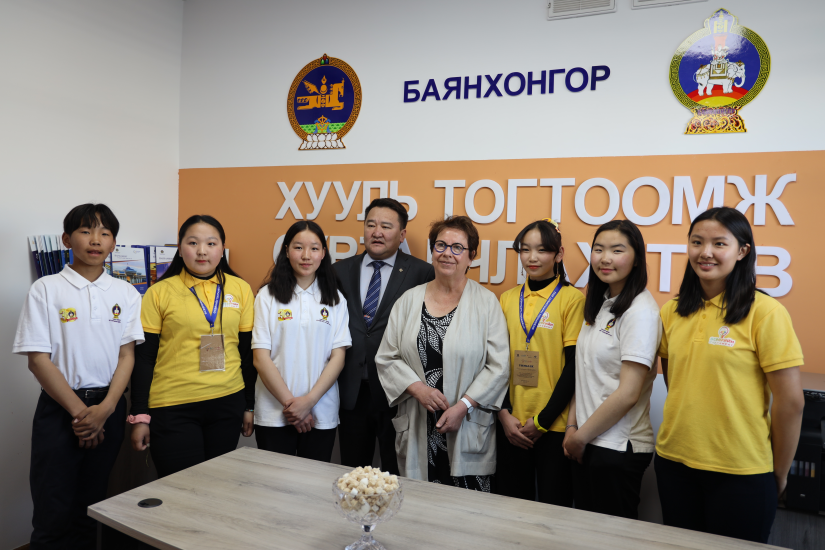

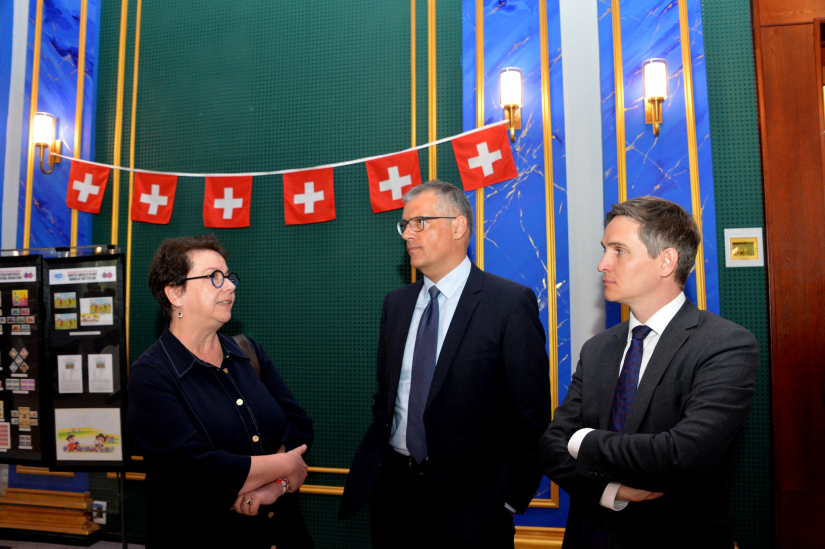
 Ulaanbaatar
Ulaanbaatar






